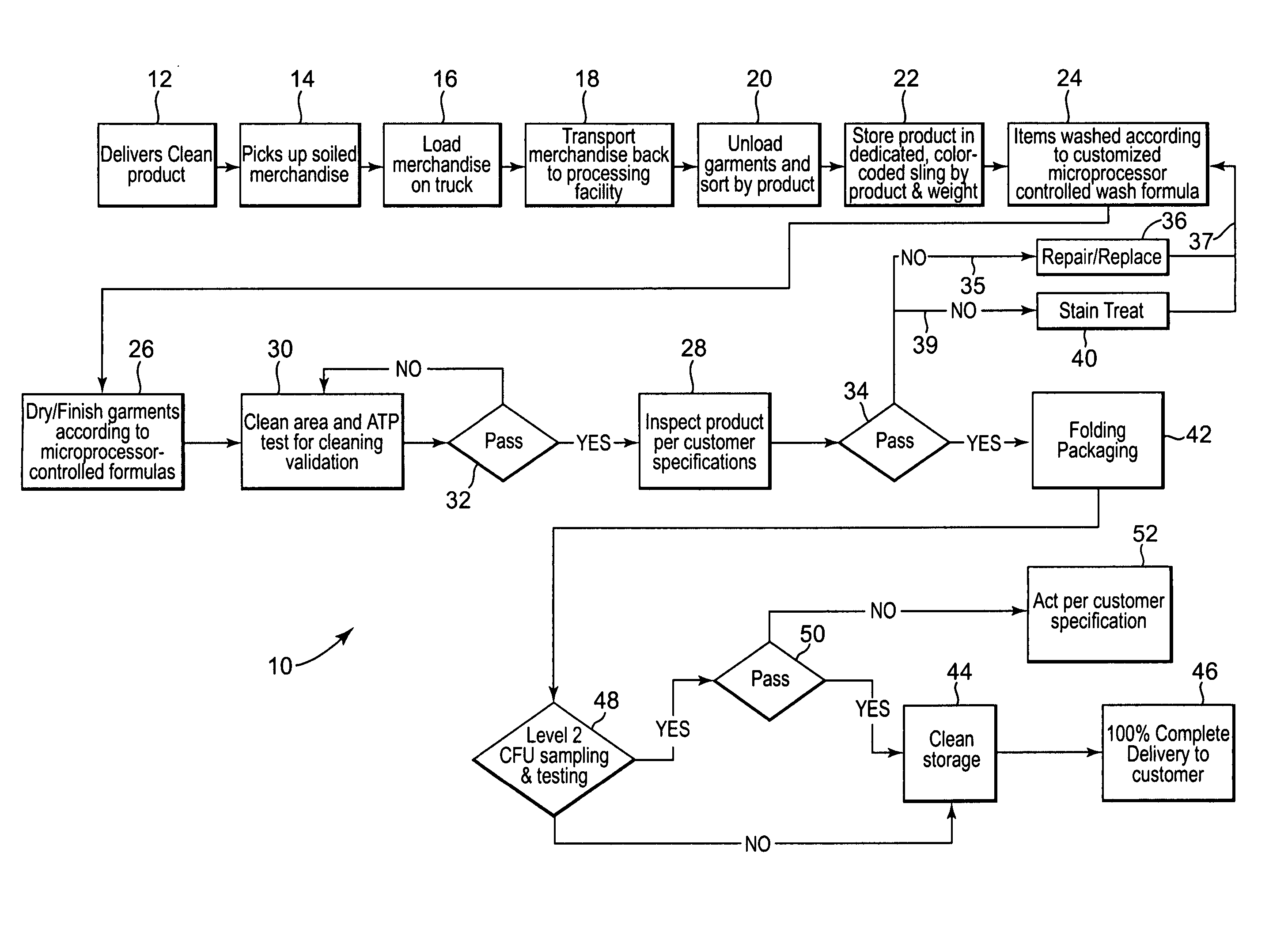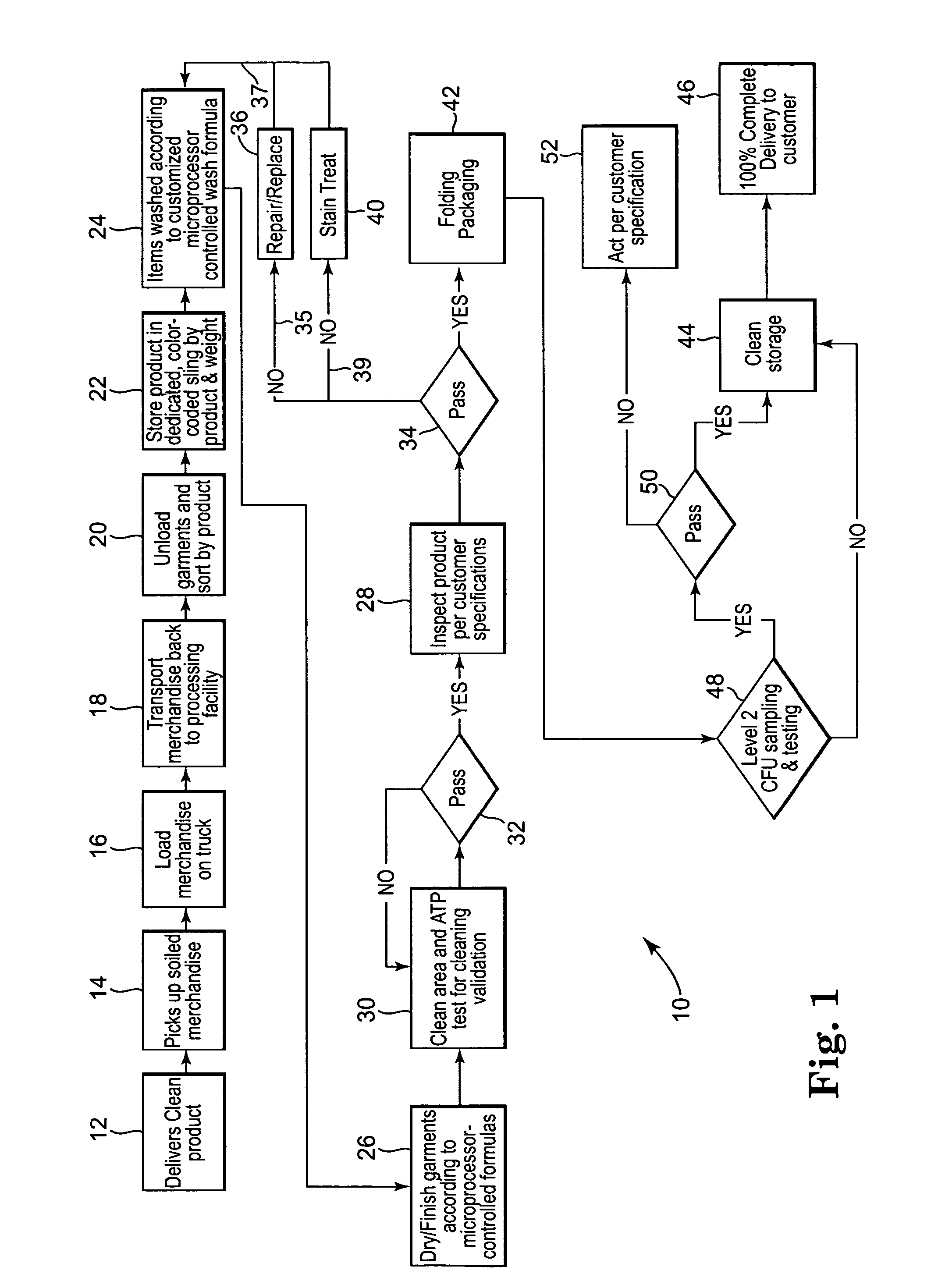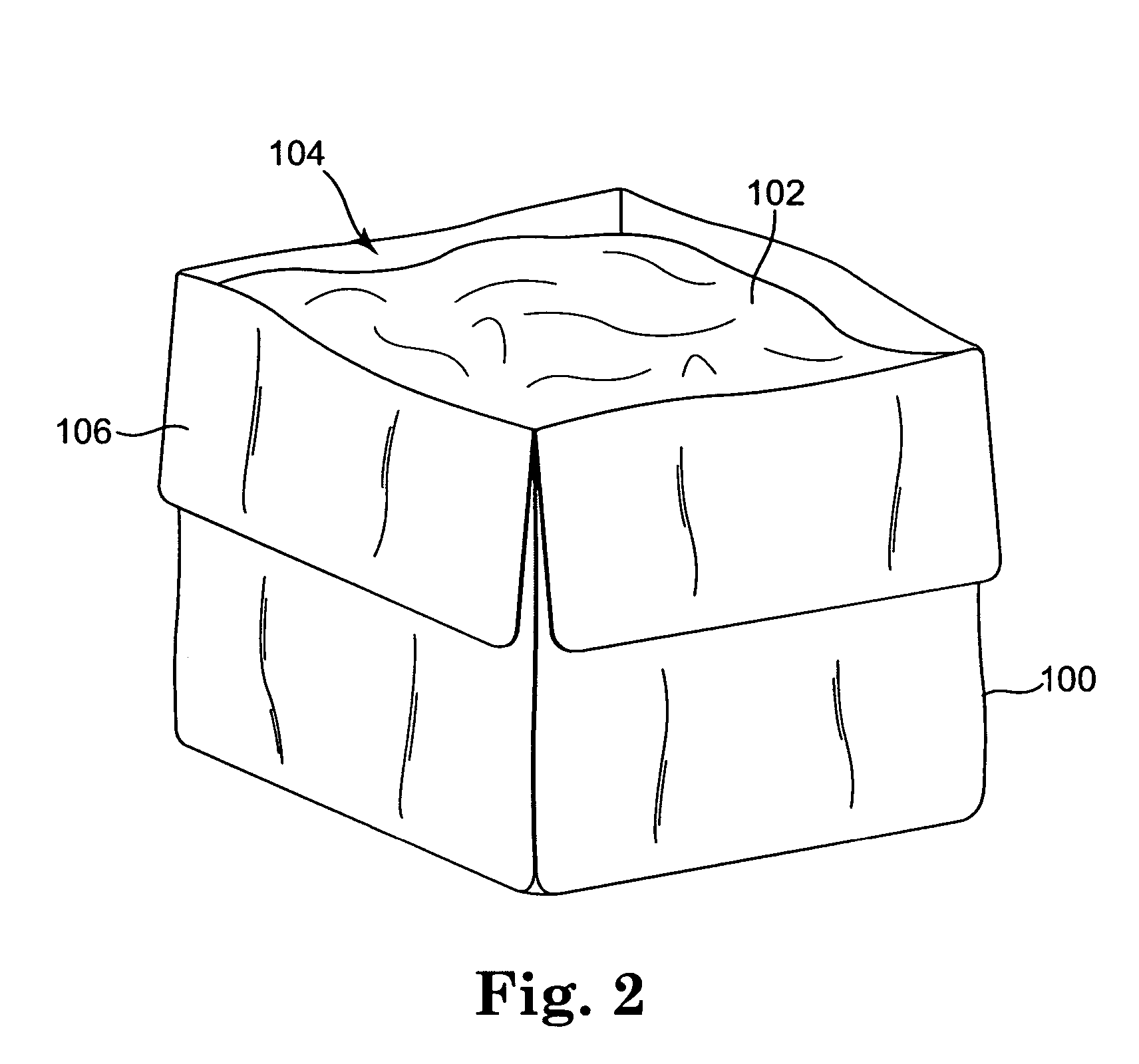Garment processing with biological sanitization and inspection procedures
a technology of cleaning and disinfection of processing surfaces and garments, applied in the direction of disinfection, detergent compounding agents, instruments, etc., can solve problems such as food safety problems, and achieve the effect of minimizing the potential for contamination of a customer's service or production facility and minimizing the potential for microbial contamination
- Summary
- Abstract
- Description
- Claims
- Application Information
AI Technical Summary
Benefits of technology
Problems solved by technology
Method used
Image
Examples
Embodiment Construction
[0017]With reference to the drawings, wherein like components are labeled with like numerals throughout the several figures, and initially to FIG. 1, a garment services process is schematically illustrated that includes many garment processing steps from the delivery of clean product and pick up of soiled garments up to the delivery of new clean garments, and includes in particular the provision of sanitizing or cleaning steps along with biological inspection processes at a plurality of points within a process cycle for minimizing the presence of microbes, and in particular bacteria, on garments after the process is completed. It is understood that only one or more than two such sanitizing and biological inspection processes can be incorporated within a process cycle based upon specific requirements of a customer or to ensure the minimizing of microbe presence on processed garments. As used throughout this application, a garment services process includes any and all steps that may b...
PUM
 Login to View More
Login to View More Abstract
Description
Claims
Application Information
 Login to View More
Login to View More - R&D
- Intellectual Property
- Life Sciences
- Materials
- Tech Scout
- Unparalleled Data Quality
- Higher Quality Content
- 60% Fewer Hallucinations
Browse by: Latest US Patents, China's latest patents, Technical Efficacy Thesaurus, Application Domain, Technology Topic, Popular Technical Reports.
© 2025 PatSnap. All rights reserved.Legal|Privacy policy|Modern Slavery Act Transparency Statement|Sitemap|About US| Contact US: help@patsnap.com



